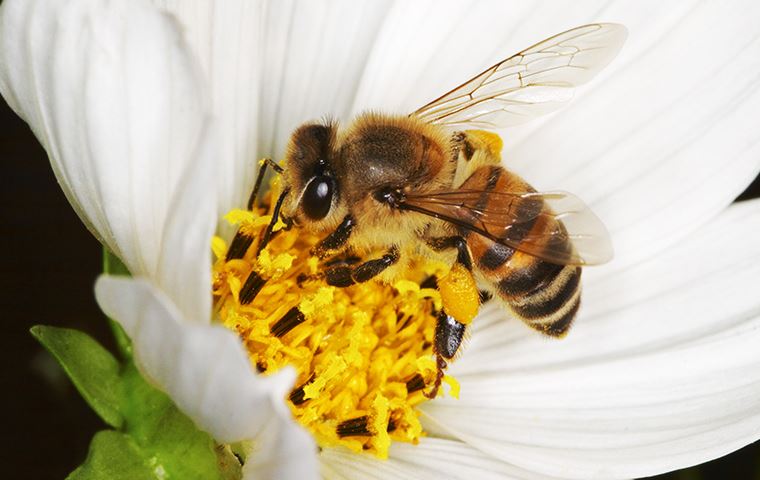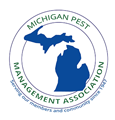
Mud Dauber Identification & Prevention
Mud Dauber (Mud Wasp)
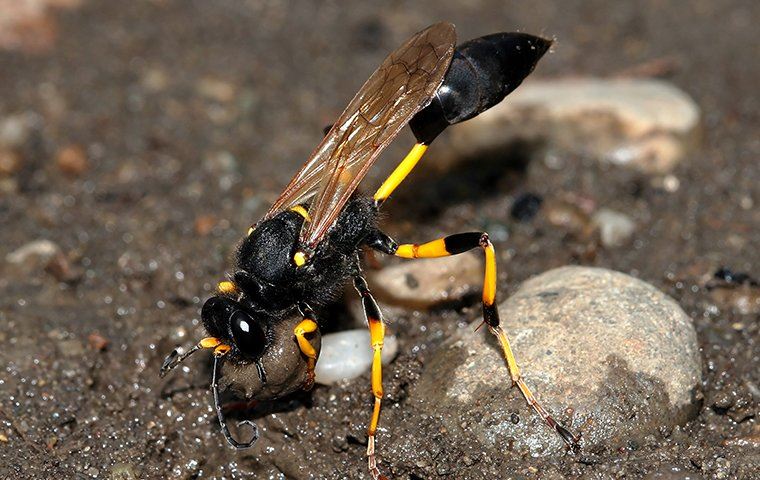
Mud Daubers, or Mud Wasps, is a name commonly used to describe wasps that build their nests from mud. The Mud Dauber has 6 legs and is long and slender with a thin, thread-like waist, and are about .5 to 1 inch (25mm) in length. In West Michigan, Mud Wasps are commonly dark with patches of yellow on their thin bodies, covered in small hairs. However, they can also be bright yellow with black markings as well. If you discover these wasps in or around your property, call a professional pest control exterminator in Muskegon, MI, for safe and effective hive and wasp removal.
Mud Dauber Nests
Nest made from mud
A female mud wasp builds the nest using mud and her saliva to form a simple urn-shaped nest attached to crevices, cracks, and corners. The female rolls mud into a ball and carries it back to her nest where it is formed into shape. You can find their nests on the side of buildings, under overhangs, porches, in barns, or anywhere that is protected from the rain. Mud Wasps prefer to build inside holes and crevices. They have been known to shut down machinery like lawnmowers and snow blowers by building their nest inside exhaust holes.
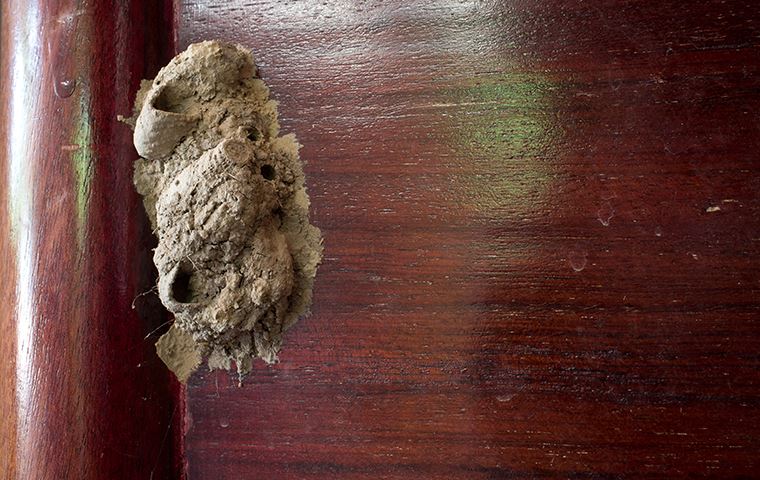
2 types of nests
There are two different types of Mud Dauber nests. The black and yellow Mud Dauber builds a series of cylindrical cells which she plasters together with mud and saliva. Next is the organ-pipe mud dauber. These insects are more robust than their black and yellow cousin. This species of mud wasp builds its nest in cylindrical tubes that resemble an organ. There is another species of Dauber that is metallic-blue in color. This species does not build its own nest. Instead, it hunts for abandoned black and yellow Mud Wasp nests.

Why Choose Safeguard Pest Solutions?
-
Safe SolutionsYou shouldn’t have to worry that your pest control is more dangerous than the pests in your home. Safeguard Pest Solutions uses natural solutions to safeguard your home from all unwanted pests.
-
Quality ServicesAs a family-owned-and-operated West Michigan pest control company, Safeguard Pest Solutions provides safe, high-quality pest control services administered by licensed and certified service professionals.
-
Satisfaction GuaranteedAt Safeguard Pest Solutions, your satisfaction is important to us. We customize our safe treatments to tackle your pest problems, and our effective pest control guarantees your complete satisfaction.
Control and Removal
When Do Mud Daubers Come Out
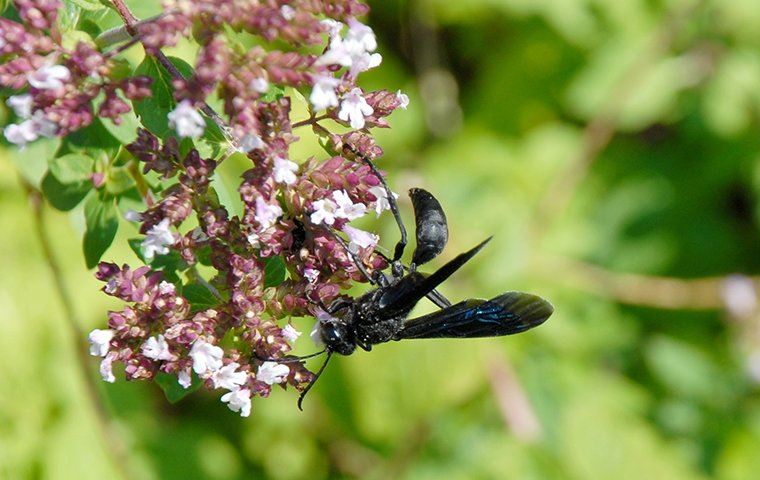
Mud Wasps prefer warmer weather. They are primarily daytime hunters. The Mud Dauber will most likely spend the night resting in its nest. They come out in the late spring and summer in northern climates. You can commonly find them around puddles collecting mud for their nests.
Mud Dauber Control
While Mud Wasps are generally harmless to humans, there are a number of reasons you may want to get rid of this pest. They are scary and may frighten children. It can be annoying having a constant wasp flying in areas where you and your family spend time together. Mud Daubers can fly into your home and sting you when you try to remove it. Or someone you know could be allergic to wasps and a lone Mud Dauber can pose a serious health risk.
When deciding whether to get rid of them, consider whether their location is near enough to human traffic that it causes an annoyance and whether the benefit of them getting rid of the spiders is worth having the daubers around. If you do decide to eradicate them yourself be careful because they can sting multiple times. The safest way to remove a nest is to hire a professional to come over and eradicate the problem. It usually only takes one treatment, and a professional may find more nests in your area that you didn’t know were there.
Removing Mud Dauber Nests
Removing wasp nests can be dangerous. If you’re unsure or are known to be allergic to wasp stings please seek professional home pest control and commercial pest control help when removing nests.
First, you should spray the nest with a wasp freeze. This will ensure that if any wasps are inside, they will die and not attack you. Next, grab a paint scraper and begin scraping the nest off whatever surface it is stuck to. Don’t be surprised if you see spiders falling out of the nest. These spiders should all be paralyzed or dead and will not hurt you. Finally, clean the area with water to remove any excess residue.
For underground and other hidden nests you may sprinkle talcum powder on and into the nest. The talcum powder acts as a poison and should kill any wasps inside.
You can attempt to relocate the nest. This is obviously the more dangerous approach as you stand a real chance of being stung. Make sure to wear protective gear and do it at night while the wasp is sleeping.
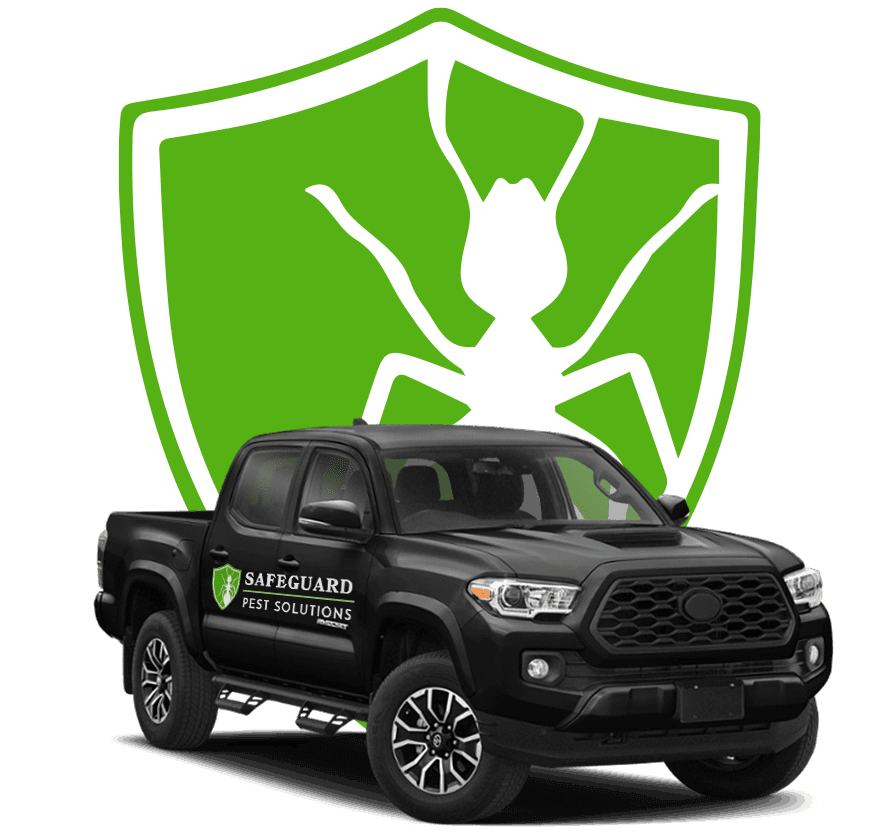

Other Resources
-
 Carpenter BeesOften referred to as Wood Bees, or Wood Burrowing Bees are a common bee found in West Michigan. Carpenter bees are often confused with Bumble Bees.
Carpenter BeesOften referred to as Wood Bees, or Wood Burrowing Bees are a common bee found in West Michigan. Carpenter bees are often confused with Bumble Bees. -
 Sting TreatmentWash the sting area with soap and water. This not only removes any dirt but will also disinfect the area preparing it for possible further first aid. The area around the sting will turn red. It will possibly burn a little bit and swell up.
Sting TreatmentWash the sting area with soap and water. This not only removes any dirt but will also disinfect the area preparing it for possible further first aid. The area around the sting will turn red. It will possibly burn a little bit and swell up. -
 Honey BeesGiven the off chance that you have undesirable honey bees around your home, you can contact a neighborhood beekeeper who might have the option to eliminate the honey bees without killing them.
Honey BeesGiven the off chance that you have undesirable honey bees around your home, you can contact a neighborhood beekeeper who might have the option to eliminate the honey bees without killing them.

Happy Customers in Your Neighborhood
Proudly Serving West Michigan & the Surrounding Areas
Check out some of our recent reviews!
-
“Very good price compared to others. Jeff came sprayed where my bees were and they were all dead the next day. Excellent service!”- Shana Phelps
-
-
“Safeguard Pest Solutions of Muskegon MI is one of the best, customer friendly, fast response time businesses I have ever experienced. I called in the morning and Jeff was at my house that afternoon! He knew exactly how to handle my situation and immediatel”- Nan Johnson
-
“Always provides such good service! We’ve used for years and will continue to! Such good pest prevention!”- Emma Hichue
Safeguard Pest Solutions Blog
Want all the latest news or updates? Browse through our blog to read our most recent posts and featured articles.
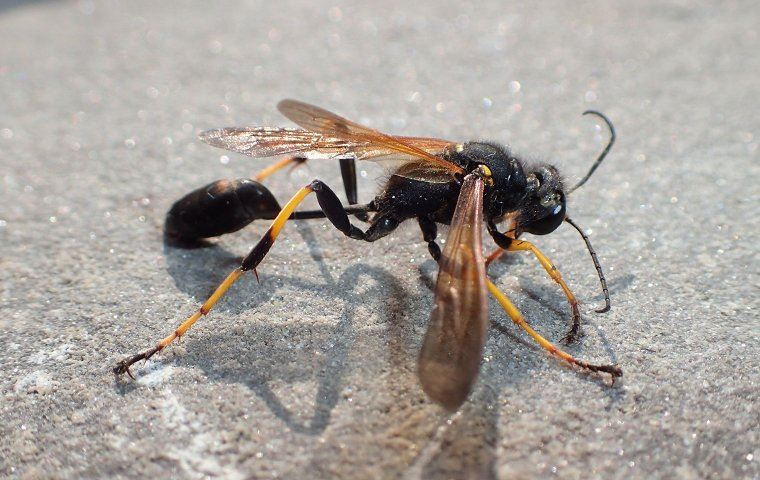
.2403141353550.jpg)
.2403141327550.jpg)
